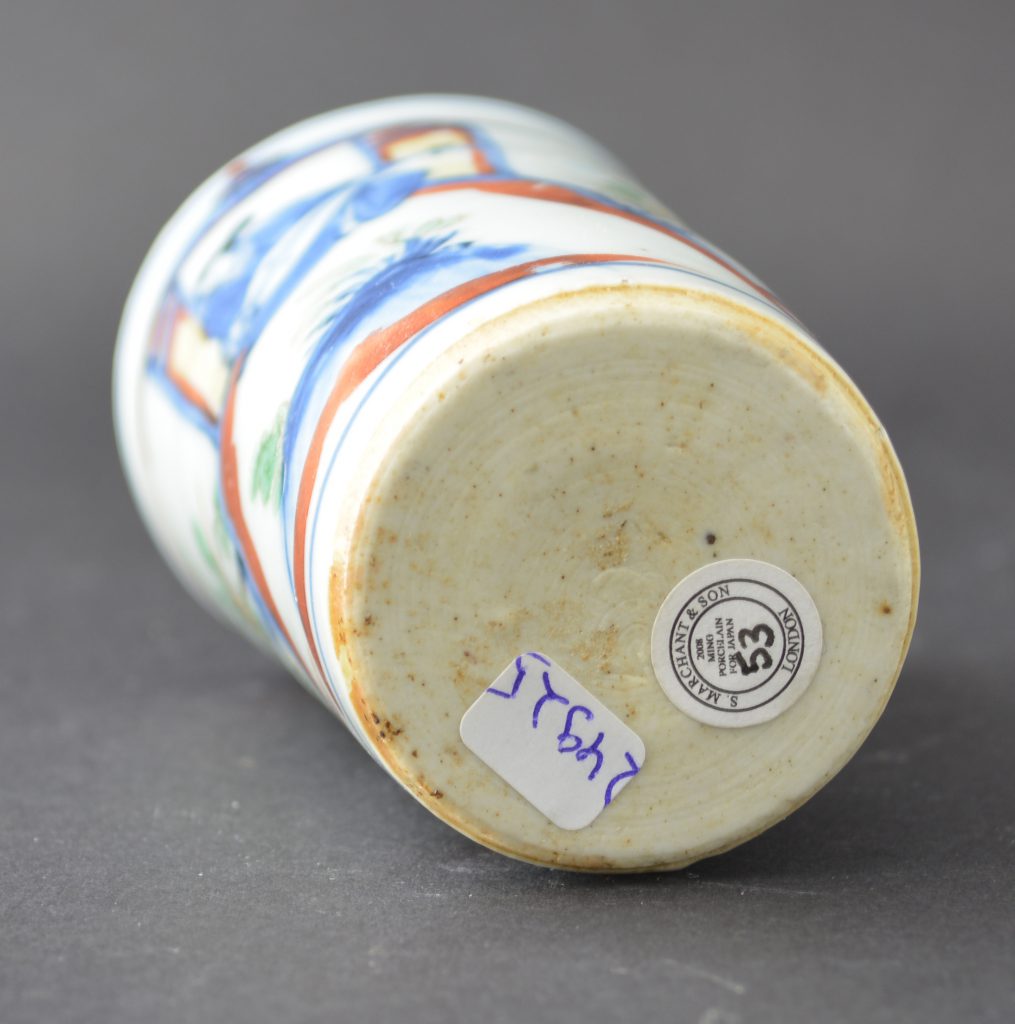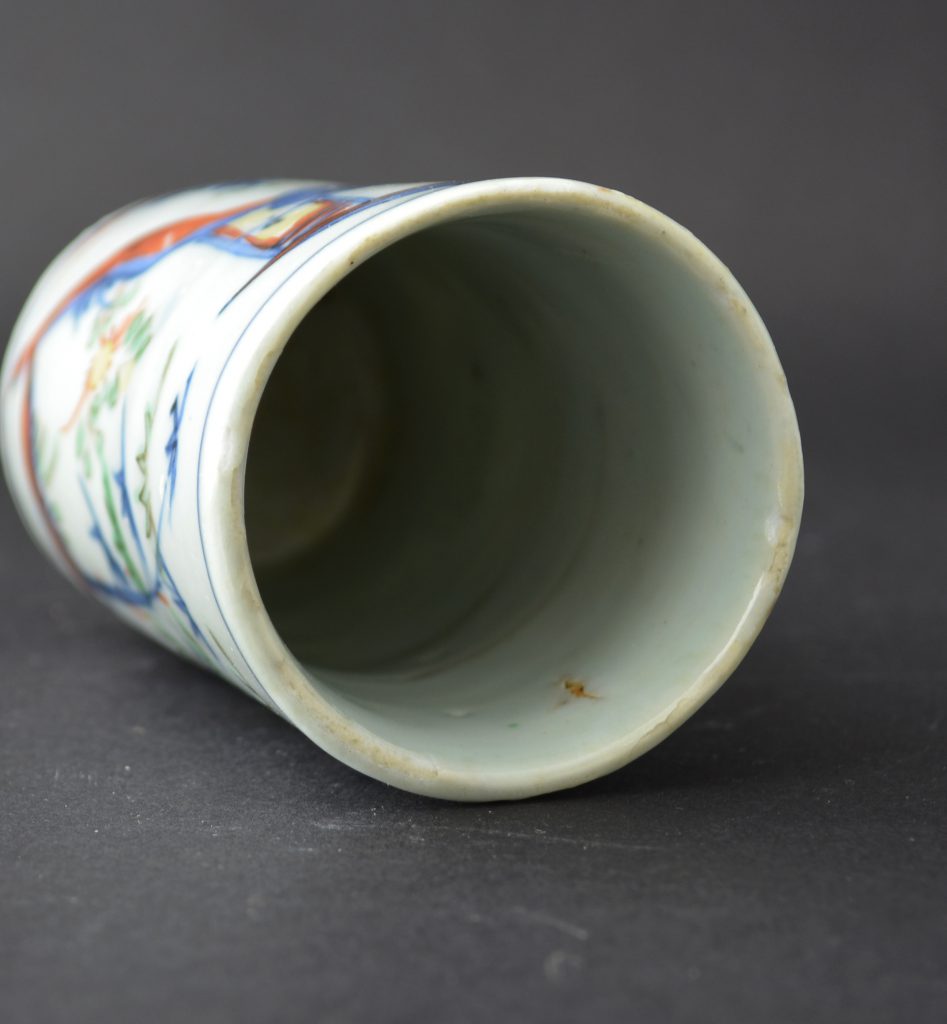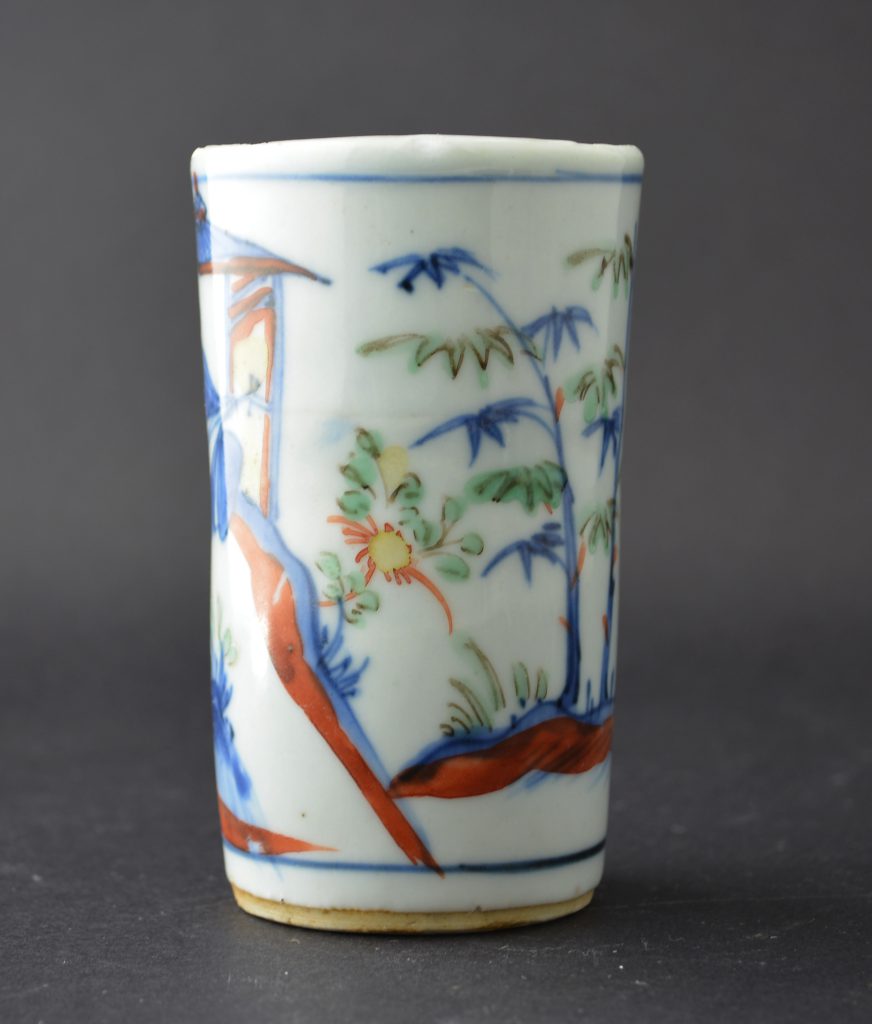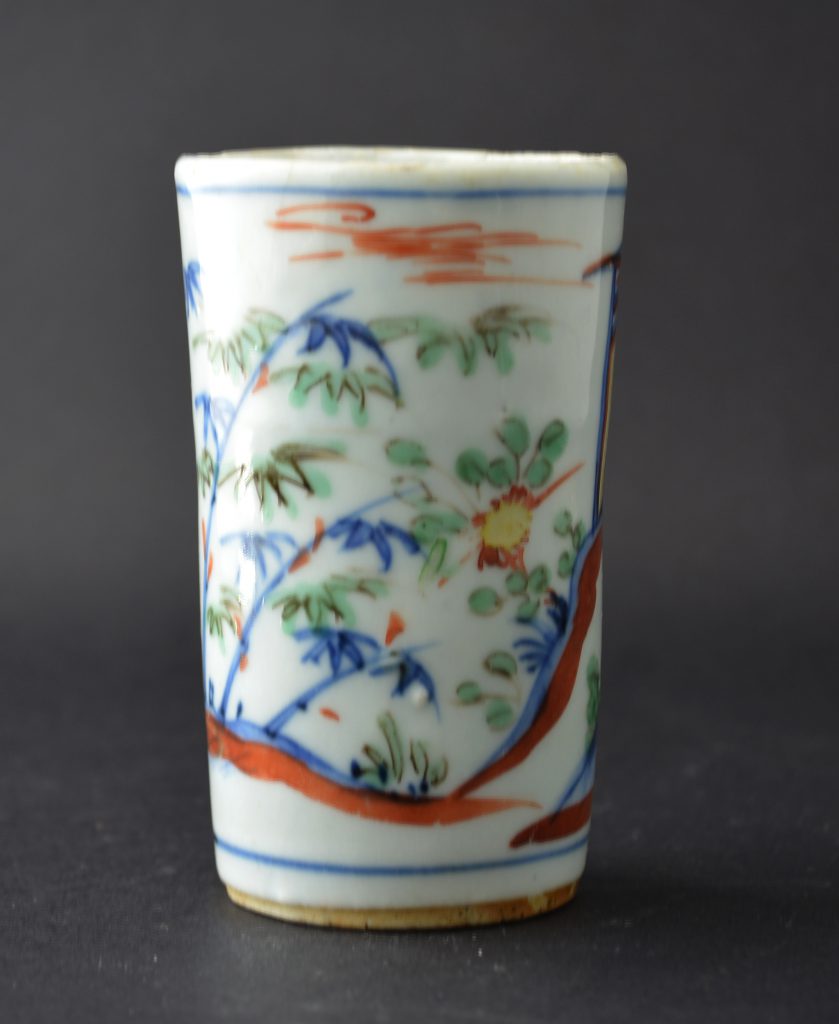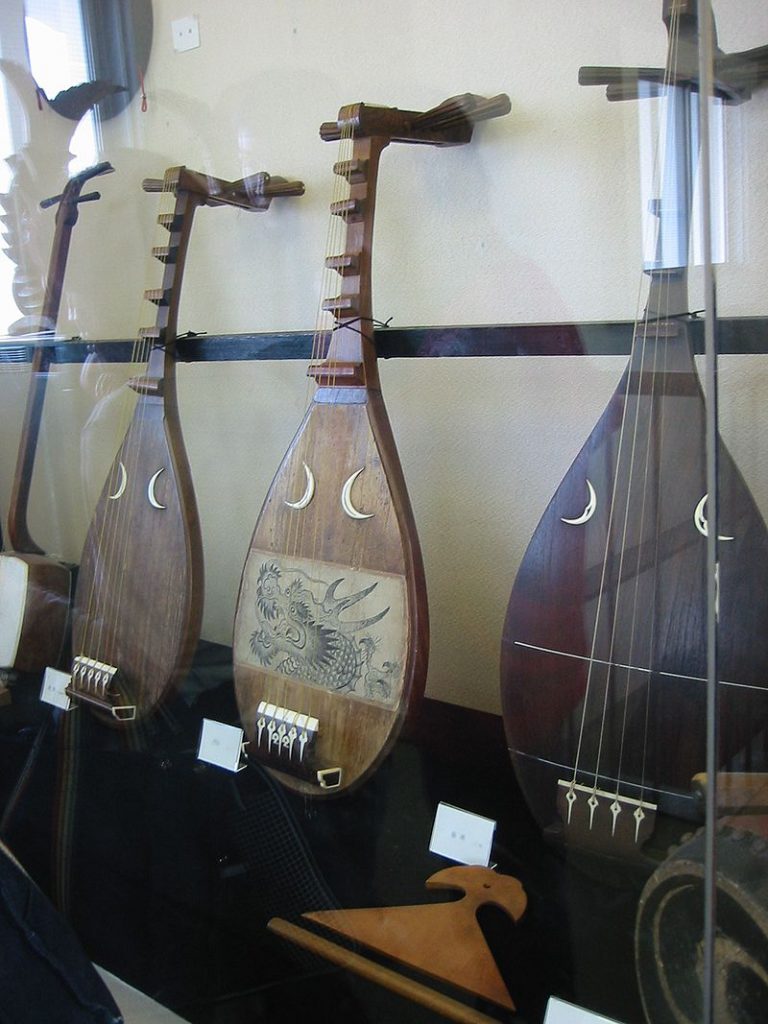
A Very Rare Wucai Porcelain Tea Container, Late Ming or Early Qing, Chongzhen or Shunzhi c.1645
A very rare Transitional porcelain Wucai tea container for the Japanese market, late Ming or early Qing dynasty, Chongzhen or Shunzhi c.1645. This tea vessel is very rare, according to Marchant’s catalogue “no other miniature vessel of this type appears recorded”. The Wucai decoration shows a seated figure playing a Biwa in a pavilion on a hillside with a bamboo grove. Illustrated in : Ming Porcelain for the Japanese Market, Ko-sometsuke and Ko-akai (Exhibition Catalogue, S.Marchant and Son, Introduction by Julia B. Curtis, 27th of October to November 10th 2008) pages 98 and 99, item 53. A Private Japanese collection. S.Marchant and Son, Ming Porcelain for the Japanese Market, Ko-sometsuke and Ko-akai (Exhibition Catalogue, S.Marchant and Son, Introduction by Julia B. Curtis, 27th of October to November 10th 2008) pages 98 and 99, item 53.
SOLD
- Condition
- In very good condition, the rim has frits which are typical typical of Ming porcelain for the Japanese market. The lutting line shows slightly in places on the outside.
- Size
- Height : 9.1 cm (3 1/2 inches)
- Provenance
- A Private Japanese collection. S.Marchant and Son, Ming Porcelain for the Japanese Market, Ko-sometsuke and Ko-akai (Exhibition Catalogue, S.Marchant and Son, Introduction by Julia B. Curtis, 27th of October to November 10th 2008) pages 98 and 99, item 53.
- Stock number
- 24925
- References
- Illustrated in : Ming Porcelain for the Japanese Market, Ko-sometsuke and Ko-akai (Exhibition Catalogue, S.Marchant and Son, Introduction by Julia B. Curtis, 27th of October to November 10th 2008) pages 98 and 99, item 53.
Information
Ming Porcelain for Japan :
During the late Ming Period the Chinese made a large among of porcelain for the Japanese market, it was made from the Wanli period (1573-1620) and ended in the Chongzhen period (1628-1644), the main period of production being the 1620`s and 1630`s. The porcelain objects produced were made especially for the Japanese market, both the shapes and the designs were tailored to Japanese taste, the production process too allowed for Japanese aesthetics to be included in the finished object. Its seams firing faults were added, repaired tears in the leather-hard body were too frequent to not, in some cases, be deliberate. These imperfections as well as the fritting Mushikui (insect-nibbled) rims and kiln grit on the footrims all added to the Japanese aesthetic. The shapes created were often expressly made for the Japanese tea ceremony meal, the Kaiseki, small dishes for serving food at the tea ceremony are the most commonly encountered form. Designs, presumably taken from Japanese drawings sent to China, are very varied, often using large amount of the white porcelain contrasting well with the asymmetry of the design.
Biwa :
A Biwa is a Japanese short-necked fretted lute often used in narrative storytelling. The biwa is the chosen instrument of Benten, goddess of music, eloquence, poetry, and education in Buddhism.It arrived in Japan in two forms. Since that time, the number of biwa types has more than quadrupled. Guilds supporting biwa players, particularly the biwa hoshi, helped proliferate biwa musical development for hundreds of years. performances overlapped with performances by other biwa players many years before heikyoko and continued until today. This overlap resulted in a rapid evolution of the biwa and its usage and made it one of the most popular instruments in Japan.
